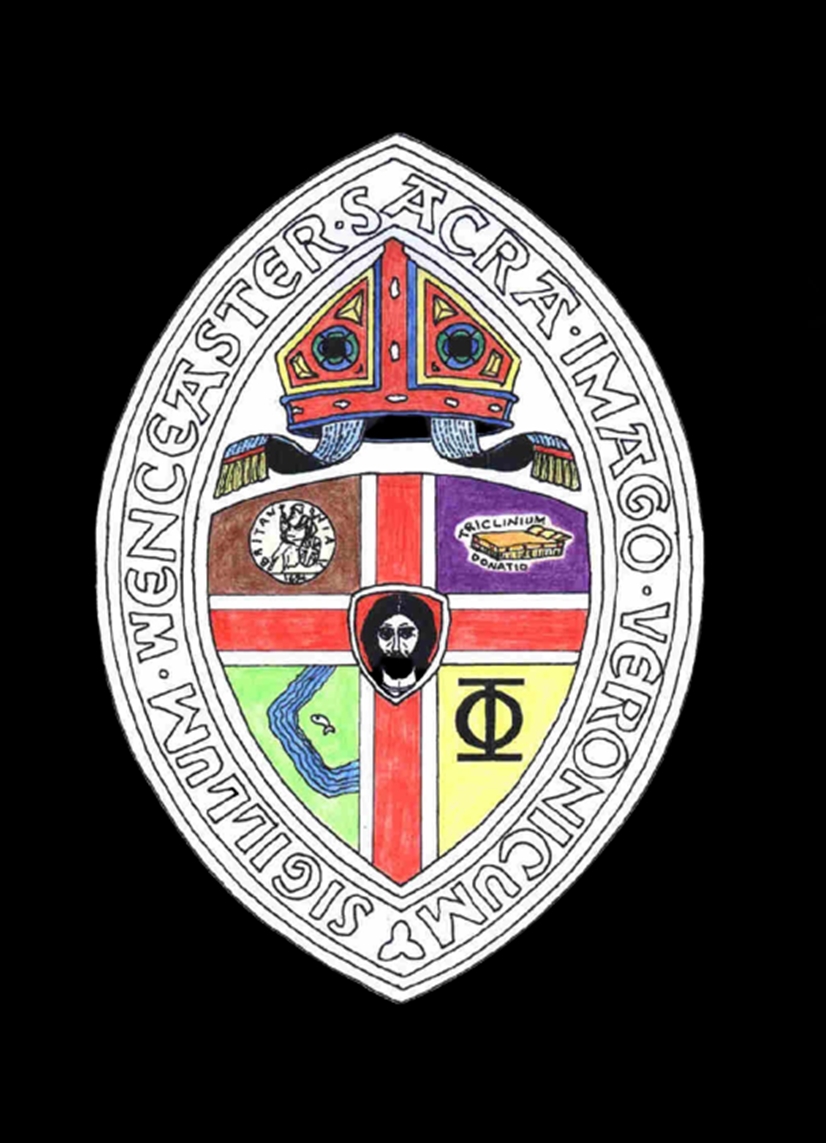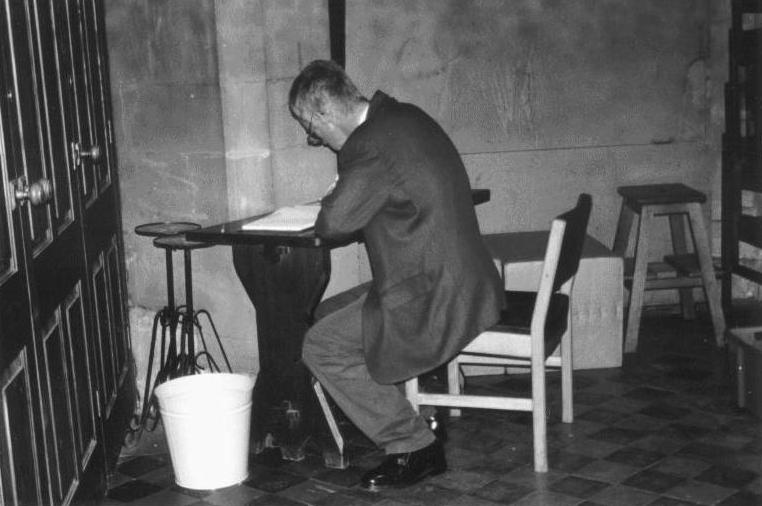|
THE GREAT SEAL OF WENCHOSTER |
|
|
The Great Seal of
Wenchoster contains imagery symbolic of the origins of the diocese. Around the edge of the seal runs the legend "Sigillum Wenceaster Sacra Imago Veronicum" The seal of Wenchoster, the holy relic (or image) of Veronica and in the centre of the shield is a representation of that holy hankie, the prized possession of the Cathedral. Below the Bishop's Mitre is a quartered shield of Arms. In the top left quarter is the symbol of the Archdeaconry of Shaston Farthing, the coin (a copper farthing) bearing the date of 1694, the year in which the name of the Archdeaconry was changed from The Wet Ridings by Royal edict. The top right quartering shows a Roman three-seater couch, the symbol of the Archdeaconry of Trickling Down. The name is a corruption of the Latin "Triclinium Donatis", (a three-seater couch, a gift) which refers to the presentation made by the Emperor Hadrian to the Roman Administrator of the area. This gift is documented on a stone tablet that was discovered in the remains of his extensive villa near the village of Werel's Loke during the first excavation in 1925. In the bottom left quartering is a representation of the river Wen, its distinctive bend around the cathedral city making it an apposite symbol for the Archdeaconry of Wenchoster. The jumping fish is the ancient Christian symbol, and denotes the residence of a Bishop. The lower right quartering contains the Greek letter "phi". This term is often found in the ancient documents of the cathedral, and can be seen carved on numerous stones around the building. Its original purpose is obscure, but to us in the present day it forms a link with the faithful of previous generations who have worshipped in this sacred space. |

|
|
Brother Xavier Malpractice OHHSV at work designing the Diocesan Coat-of-Arms in the Spring of 1923.
|
|
